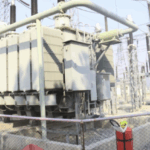Editor’s Note:
Despite the recent high-level economic and trade talks between China and the US resulting in a 90-day pause on most tariffs on each other’s goods, small American entrepreneurs with businesses in China still face uncertainties. One such business owner is Ramon van Meer (van Meer), who sells shower heads made in China and Vietnam. To determine the extent to which US tariffs could spur domestic manufacturing and how many people would actually pay for more expensive products, he set up an online experiment. On his website, van Meer offered two options: the imported shower head for $129 and a domestic version for $239. Of the more than 25,000 people who visited the website during the two-week trial, about 600 ordered the imported shower head, and no “Made in the US” shower heads were sold. In her I-Talk show, Global Times (GT) reporter Wang Wenwen talked to van Meer about his experiment and why “using tariffs to bring manufacturing back to the US” is unfeasible.

Ramon van Meer Photo: Courtesy of van Meer
GT: Why are your shower heads made in the US much more expensive than those made in China?
Van Meer: I think there are several reasons. First, we don’t have the facilities. With my current supplier, I can do everything from A to Z. If I wanted to do it in the US, I would have to do injection molding at one factory, then spray it, either ship or truck it to another facility. Then I have to truck it to another facility to do some other stuff. Even transporting freight between all these facilities is going to be very expensive and time-consuming. And then I think the labor cost is also much different, and the US is not a manufacturing country, so we don’t have the facilities here. We don’t have the specialized labor force and we don’t have the logistics for it either.
In contrast, in China it’s more cost-efficient in general. There’s no quality difference in my case between the two shower heads. So definitely for a small business like mine, manufacturing it overseas is better. We also work with Vietnam, Thailand and Brazil.
GT: Your experimental results seem to differ from what the US government wants to achieve. Although many people are shouting the “MAGA” slogan, they are not willing to bear the corresponding cost increase. Do you think this means that “using tariffs to bring manufacturing back to the US” is completely unfeasible? Some claim that tariffs are used to protect local industries. Do you think small businesses like yours are being protected?
Van Meer: I’m not a tariff expert, so I don’t know the right method to bring back manufacturing. But what I do know is that the rollout of this tariff policy has been very bad for small businesses like mine. Even if I wanted to bring it back, I couldn’t, because I don’t have enough time. It takes many months, or even several years, to build manufacturing facilities and bring it up to the skill level of countries such as China or Vietnam.
If a country imposes tariffs only on specific products, not all products, I think it is okay. But a blanket tariff on every single product, especially at such a high rate, is not good. And then there’s no time to even bring or build anything here in the US.
GT: Based on your observations, in your own industry, is maintaining a globalized production model also beneficial to the economic development of the US?
Van Meer: Yeah, I do think so. In my case, [under high tariffs] I have no other option than to manufacture in the US. I would have to sell it for $110 more in order to keep my company alive. I will barely sell any shower heads because people are not willing to pay that much money for a shower head. This means I would have to close my company. I have 30 employees here in the US. I would have to lay them off. A lot of people would lose their jobs, if we go against the globalized economy. I think there should be a good middle ground between ensuring that we have a globalized economy where we all work together and protecting jobs in each country. It doesn’t matter if it’s the US, Brazil or Germany.
GT: Earlier this month, China and the US agreed to roll back most tariffs on each other’s goods for an initial 90-day period. Has your business turned around accordingly?
Van Meer: Correct. That’s what happens because shipping prices are reset every month. It is based on supply and demand, so in May, when the tariffs were lowered and the agreement was reached, everyone wanted to try to send their inventory to the US at the same time. For us, we saw an increase, but not by much. There’s a relief on my end that we can continue building this business and growing this business. But at the same time, it’s a 90-day temporarily agreement. I’m hoping after those 90 days, a long-term agreement between the two countries will be reached.
GT: Do you think uncertainty remains high? What steps, if any, are you taking to ensure that you are prepared for the uncertainties you face in the economic and trade relationship between China and the US?
Van Meer: Yes, the uncertainty remains high, because for me, as a small business owner, it’s hard to plan ahead. Who knows what will happen after the 90 days. Will tariffs go back up to 145 percent, or maybe even higher? It’s very difficult at the moment for me to plan ahead. I am waiting for that news. Then, I will make some really big decisions for the company. Now I’m pausing new product developments and looking for other solutions, factories and suppliers in different countries that allow lower or zero tariffs.
We did have to scale down our marketing, and our overall revenue is lower because we want to make sure we have enough inventory to weather this storm until the two countries come to an agreement.
I still have hope. I do think both countries want to make an agreement and work this out. And I think both countries know it’s in the best interest for everyone to make an agreement.











